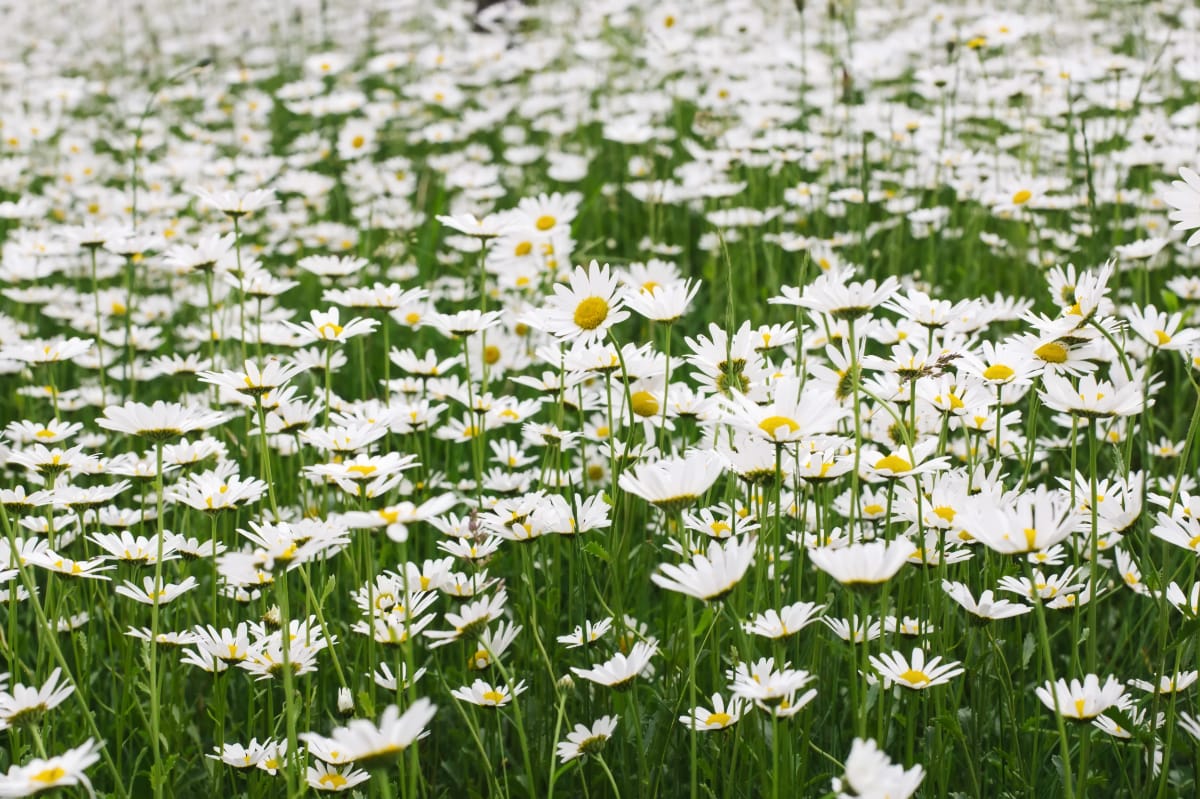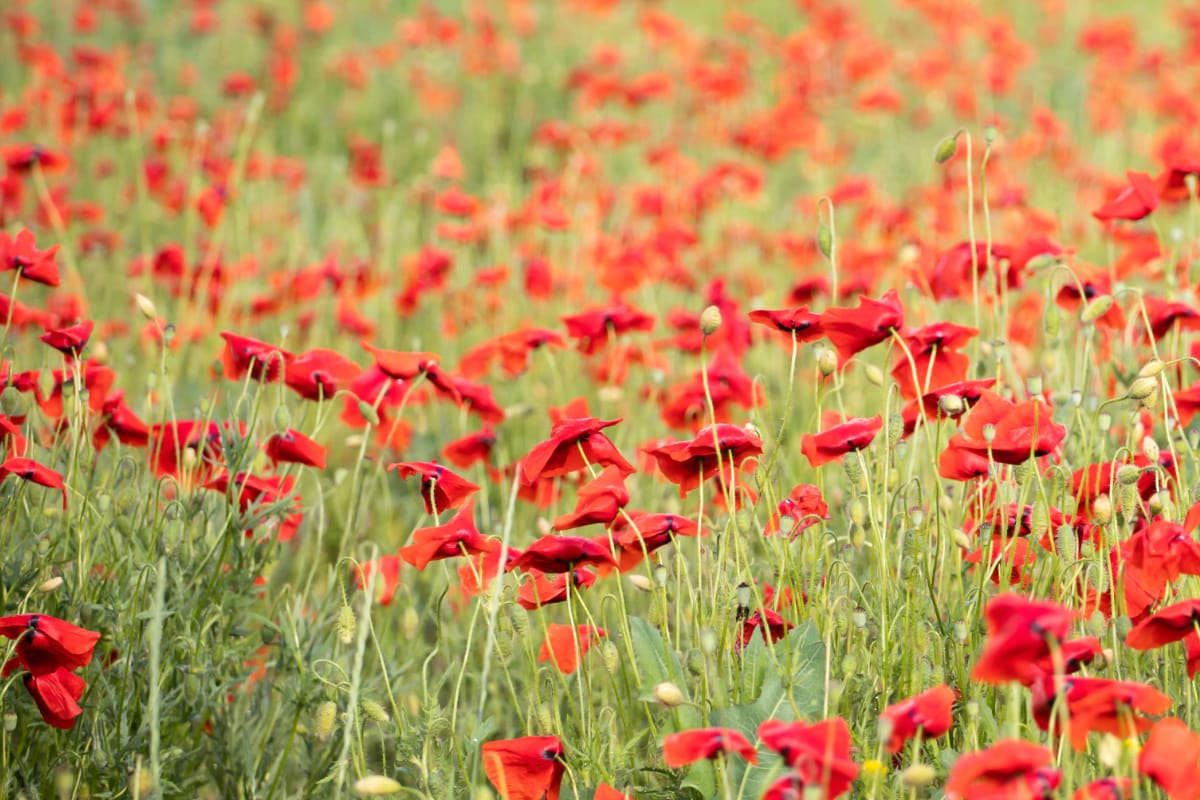Nothing in Basket!
Caring for a wildflower meadow - or even just a small patch in your garden - helps ensure it stays vibrant, beautiful, and full of beneficial plants. Even if you have wildflowers sprinkled among your cultivated flowers in borders, these tips can help them thrive.
|Suitable For: Wildflower areas and meadows | Timing: Early to later summer | Difficulty: Moderate |
While they might look wild and free, both new and established perennial wildflower meadows benefit from some timely care. This helps create a lovely balance of grasses and wildflowers. Even though they're much lower maintenance than a traditional lawn, cutting them can be a bigger job and often needs to be done a few times a year. The right timing also encourages specific wildflowers to flourish.
There are two main types of wildflower meadows, and each needs slightly different attention:

The oxeyed daisy once successfully sown will come back year after year.

Poppies live for one year, they will only come back in the following year if you allow them to set seed.
Alternatively, 'No Mow' for the entire Summer: You can let your existing lawn become a summer meadow by simply not mowing it during June, July, and August. Just give your lawn its last cut in April, then put your mower away for the summer. This allows the wild plants already in your lawn to grow tall and flower, adding a burst of colour and attracting pollinators and other wildlife. You can choose to leave your entire lawn uncut, or just a section, and even mow winding paths through it if you like.
Both newly created and established perennial meadows need cutting, but the methods and timings vary. The following cutting routine applies to perennial meadows and mixed meadows (those with both perennial and annual plants).
It's important to regularly mow your new perennial or mixed meadow in the first year after sowing. This encourages perennial flowers and grasses to develop strong roots.
Aim to cut your meadow to a height of about 5cm (2 inches) roughly six to eight weeks after the seedlings appear. Repeat this every two months throughout the first summer. These subsequent cuts can be slightly lower, around 4cm (1.5 inches).
After the first year, you can switch to the guidance for established meadows.
Established perennial and mixed meadows can be cut at specific times during the year. Depending on how vigorously your grass is growing and which wildflowers you want to encourage, there are three main times in the year to cut your meadow. Performing one or more of these cuts will help keep your meadow healthy and vibrant:
Cutting earlier in this period (late June/July) favours spring-flowering plants like cowslips, lady's smock, selfheal, and bugle.
Cutting later (August) encourages summer flowers such as knapweed, devil's bit scabious, and lady's bedstraw.
After the very last cut of the season, you can keep all meadows mown shorter and neater through the winter. Whenever you make a cut that produces a lot of clippings, always remove them and add them to your compost. This helps reduce soil fertility even further, which benefits wildflowers.
Many standard lawnmowers simply aren't designed to cut long, dense grass. Here's how to tackle it:
Important Tip: Check for Wildlife! Before you start cutting any long grass, always make sure no wildlife is sheltering there. Hedgehogs, toads, grass snakes, and many other creatures could be hiding, even in small patches. Walk through the entire area making plenty of noise, giving any animals time to move to safety.
Always take great care when using powered machinery like mowers and strimmers. Make sure you wear appropriate safety protection, including eye goggles, ear defenders, sturdy gloves, and robust footwear. Strimmers, in particular, can kick up a lot of debris (my neighbour once had a stone smash his window while using a strimmer through his grass!), a face visor is also highly recommended. Always read and follow the manufacturer's safety and operating instructions for your equipment.
If you plan to cut your meadow with a scythe, it's really worth getting expert guidance on how to use it correctly. Learning the right technique will save you time and effort in the long run and help prevent potential injuries. Always store bladed tools out of reach of children.
Annual wildflower patches generally need very little maintenance - just remove any unwanted or overly vigorous weeds.
To encourage your annual wildflower area to return the following year, allow the plants to produce seeds. Once the seeds are ripe, in late summer or autumn, either cut or gently pull out the spent plants (cutting is better for the soil). In a small patch, just give them a good shake to ensure all the seeds have fallen. In a larger area, leave the cut plants on the soil for about a week to allow all the seeds to drop, then rake them up and add them to your compost heap.
It's usually a good idea to sow more seeds for the second year. The amount already in the soil might not be enough for a really spectacular display. Sow your chosen annual seed mix in early spring (or in the autumn of the first year). Again, let these plants scatter their seeds in late summer or autumn. After this, there should be enough seeds in the soil for the wildflowers to re-grow naturally each year, so you shouldn't need to sow additional seeds.
While it might seem strange to weed a wildflower meadow, it's an important part of maintaining a healthy and balanced mix of species. Especially in new meadows, it's a good idea to pull out any unwanted plants that appear, or to thin out species that are becoming too dominant.
If your soil is very fertile, more vigorous species can sometimes take over, at the expense of more delicate wildflowers. Also, very successful self-seeders, like teasels and thistles, can form large colonies unless they are kept in check.
So, keep an eye on the balance of species. Simply dig out or pull any plants that are becoming too numerous or are unwanted before they set seed.
The main problems you might encounter are too many unwanted weeds or overly dominant grasses:
Other Blogs You May Find Interesting:
Nothing in Basket!
